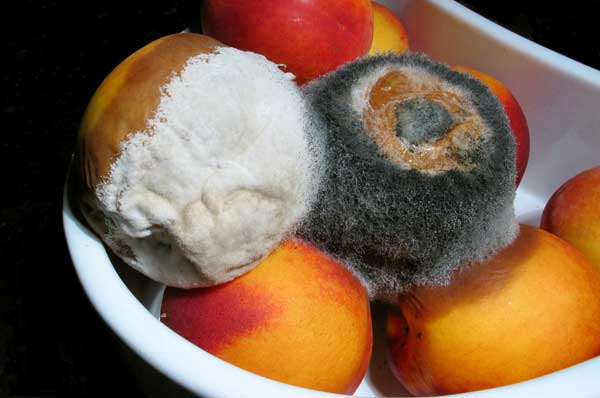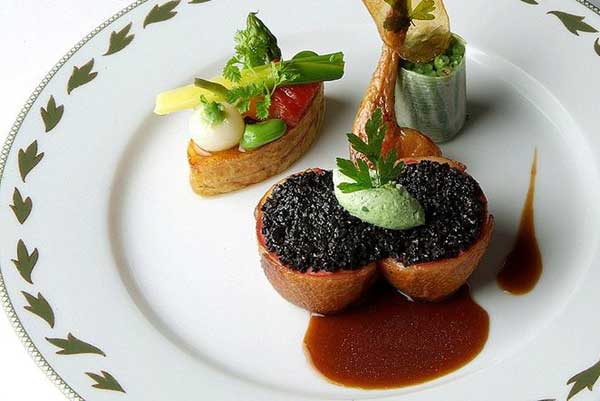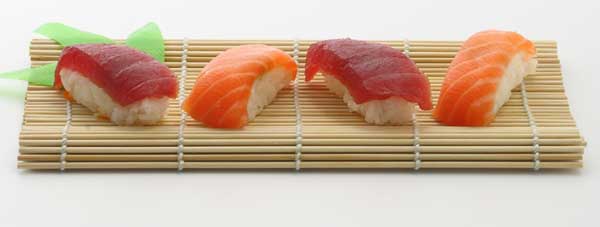With the holidays upon us, food is inevitably a source of discussion. As a marketer, you know that for your content to provide value, it must be (like food) consumed and digested.
You also know that the ingredients, timing, and presentation all have an impact on what we consume!
Straight from the marketer's cookbook, therefore, here are four tips for making your content readily consumable.
1. Choose the finest ingredients

Image by Steve Buissinne via Pixabay
Great food starts with great ingredients. Great content is the same. Knowing your key messages and differentiators, and really honing your tone, are the basics.
If your company doesn't have a specific voice and you haven't even begun to think about personas, consider doing so; the more you know about the tastes and preferences of who you are trying to reach, and the more you appeal to those, the more effective your content.
2. Keep it fresh

Image by Roger McLassus via Wikimedia Commons
Stale content has just as much appeal as week-old salad: none.
If prospects are going to read and interact with your content, it needs to be timely and relevant. That doesn't mean you always have produce new content (although... you mostly do), but it does mean that your evergreen content has to be just that: evergreen—not brown and wilted at the edges.
Fresh content can be a matter of perspective. What is relevant to someone midway through the buying journey may not be relevant to someone at the decision stage.
One way companies keep their content fresh while keeping their messaging on point is to ask prospects to engage with the content and then share their opinion about what is relevant to them. Interactive content—maybe a personality test or assessment or survey—can provide marketers with an opportunity to ask prospects about their concerns and current needs to determine where they are in the process.
Then, using the information to build an enhanced customer profile, the marketer can next serve up just the right morsel of content.
For example, DemandGen, which helps companies deploy and use marketing automation and CRM systems, is running a campaign asking its audience of prospects to think about how strong their Sales and Marketing relationships are. It developed an assessment covering the key problem areas for Sales-Marketing alignment, including questions such as "Do you have an agreed-upon definition of the word 'lead'?"
Based on responses to those questions, the marketers at DemandGen are able to suggest the best next step for the prospects answering the questions.
3. Use portion control
A well-balanced marketing mix features snacks and full meals. Bite-sized content is a great way to grab attention and pull prospects in when they are not yet ready to commit to a complete information download.
For example, content elements such as brief polls and surveys are a quick way to gauge interest and start the conversation with a fresh lead. They also provide immediate insights that Sales and Marketing can use for follow-up. Bizo/LinkedIn achieved a 79% click-through rate and 56% lead-form completion rate when the embedded a weekly poll on their blog.
Another example: HR solutions provider SilkRoad showcases an ROI calculator on its homepage that offers industry best-practices alongside cost-related questions. In the first two months, the calculator generated almost 300 new leads—better qualified for Sales than usual.
Meanwhile, at the evaluation stage, more in-depth (long-form) content might be more compelling to your prospect. Once people require more information, interactive whitepapers, webinars, and e-books can provide the next level of detail.
The Interactive Guide to Becoming a Backup and Disaster Recovery Superhero, from Unitrends, is a good example of interactive, long-form content that that speaks to prospects further down the funnel.
Most likely, your prospects will be at various stages in the buyer's journey, and that means you need to have content that speaks to them based on where they are in that process.
4. Presentation matters

Image by Jacques Lameloise via Wikimedia Commons
When we head out for a night of fine dining, we don't expect our Kobe beef to arrive in a styrofoam container with a plastic spork and a packet of ketchup. And we do expect our sushi to be both fresh and tastefully arranged.
We want the same of the content: It must look (and taste) good, and it must be easy to consume. Otherwise, we might skip it and move on to the next email, ad unit, or infographic.
You might have exactly the right message, but in a form that doesn't attract attention: You know that all the best content in the world won't do anyone any good if it resides on a website that's a complete mess, and that a 100-page whitepaper in six point type doesn't make sense.
But when was the last time you thought about overhauling your CTAs with more compelling copy? "Inter-action verbs" are better than "action verbs" in driving results: "Test," "Assess," "Calculate" and other interactive calls to action generate click through rates that average 50%.
For an example of a great in-event piece of interactive content, look at what Cornerstone OnDemand used to promote its presence at HR Tech Europe Conference and Expo. It created a personality test called "What's your Halloween Worker Style?" and presented it to event attendees via iPad. Users found out whether they were office zombies, vampires, etc. Then, Cornerstone invited attendees to a company-sponsored cocktail party and served app users drinks crafted specifically for the result of the personality test. It was fun, seasonal engagement that built excitement while collecting valuable lead data on attendees.
Elaborate? Yes, but talk about memorable presentation!
If you want prospects to eat up what you serve, make sure you are cooking up something worth consuming!
Want to check how consumable your content is? Take the quiz:






